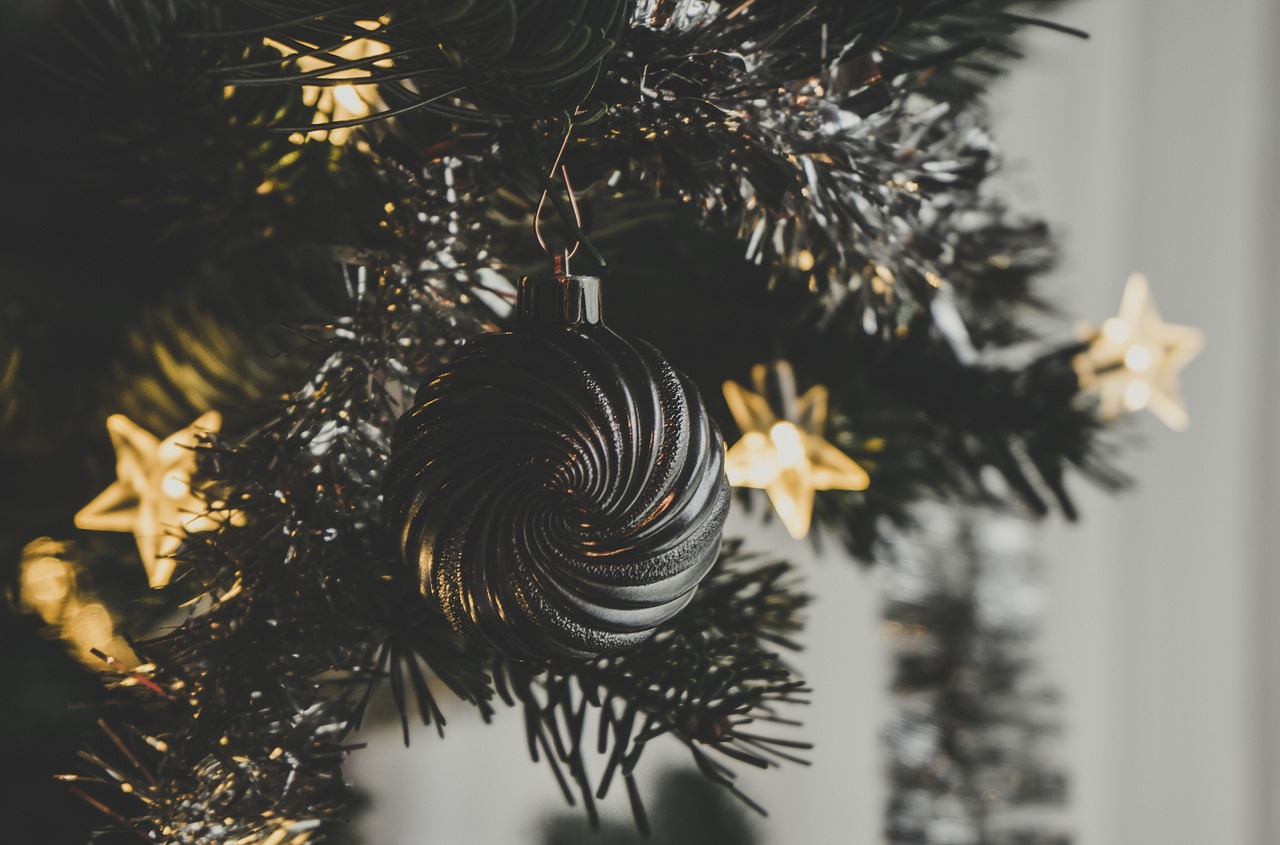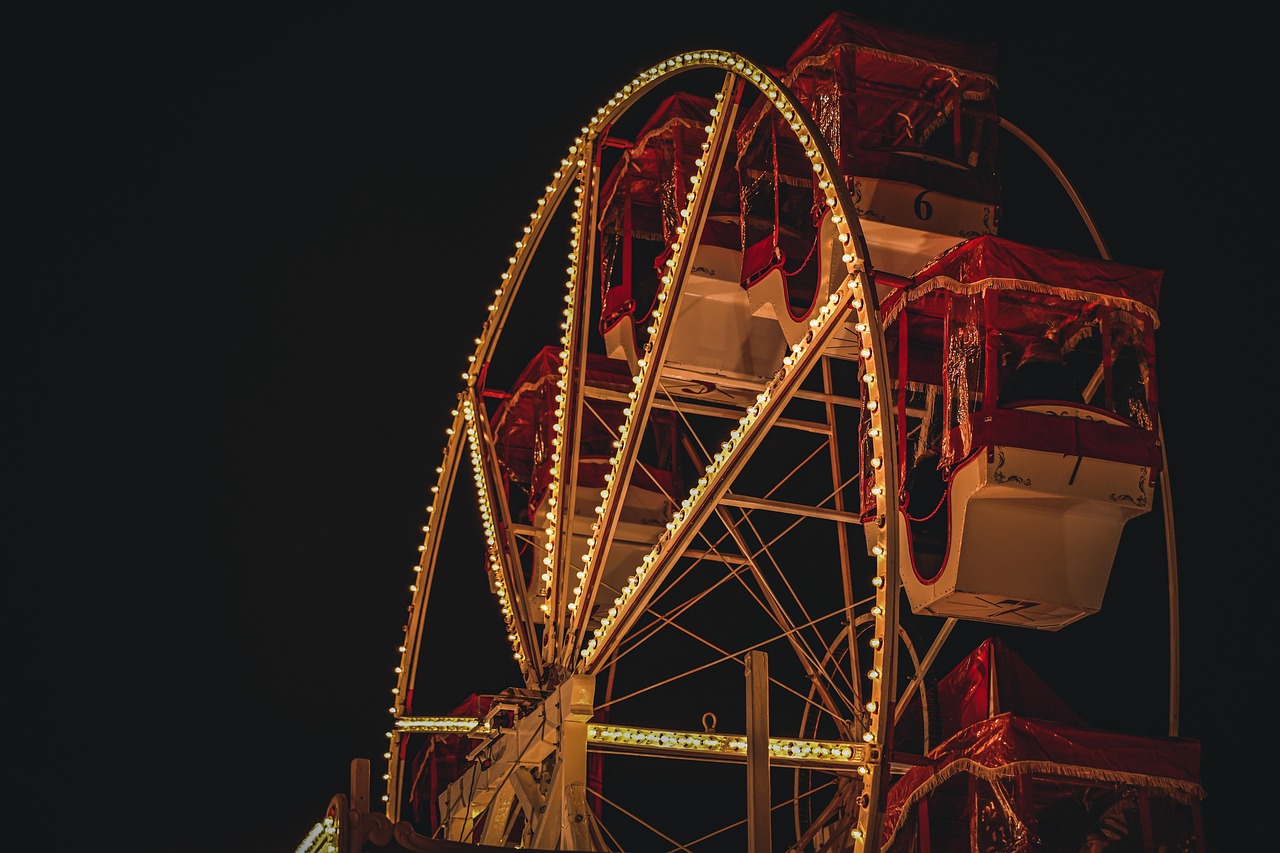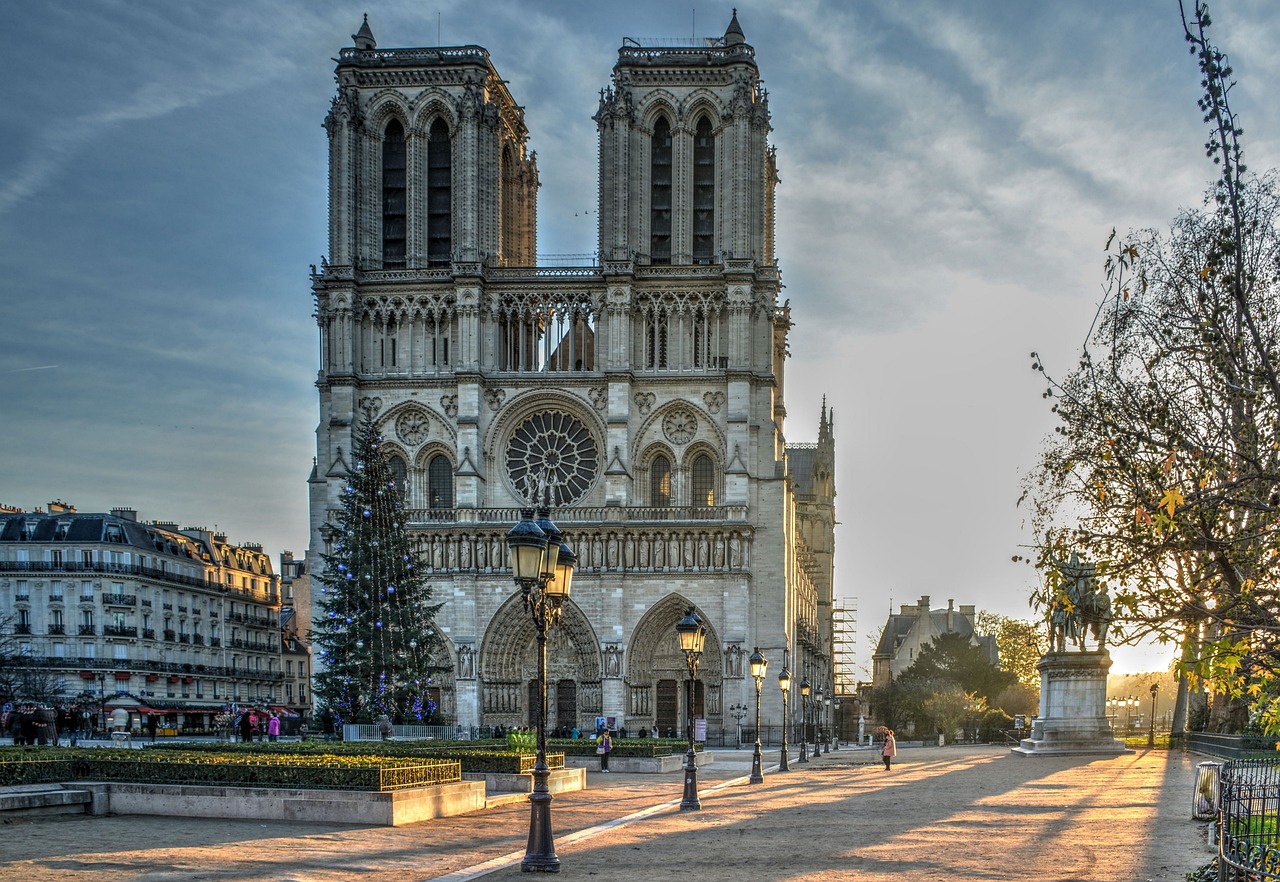Trees are central to Christmas traditions, symbolizing life, renewal, and festivity. The Christmas tree, often adorned with ornaments and lights, has become a beloved focal point in holiday celebrations around the world. This tradition combines ancient customs with modern practices, showcasing the significance of trees during this festive season.
The Significance of Trees in Christmas Traditions
Trees have played a vital role in various cultures throughout history. In the context of Christmas, they represent more than just decorations. The use of evergreen trees during winter celebrations dates back centuries, with their ability to remain green even in harsh conditions symbolizing resilience and hope.

Many historians believe that the modern Christmas tree tradition originated in Germany in the 16th century. People would bring evergreen trees into their homes and decorate them. This practice was soon adopted by other countries, evolving into the Christmas tree tradition we know today.
Throughout history, different cultures have attributed various meanings to trees. In many traditions, evergreens are associated with eternal life and fertility. The symbolism of trees is deeply rooted in both pagan and Christian beliefs, which have merged over time, creating a rich tapestry of customs surrounding the celebration of Christmas.
Historical Origins
The earliest known use of a tree in winter celebrations dates back to ancient civilizations. For instance, the Romans honored Saturn, the god of agriculture, during a festival called Saturnalia. They decorated their homes with greenery, including laurel and holly.

In addition to Roman traditions, ancient Egyptians worshiped the life-giving qualities of trees. They revered palm trees as symbols of victory and resurrection. Similarly, in Norse mythology, the Yule tree was significant during winter solstice celebrations, representing the return of light and life.
The Christmas Tree Tradition
The modern Christmas tree began to take shape with the introduction of decorated trees in Germany. This practice spread across Europe in the 19th century, gaining popularity in England and eventually making its way to America.
Queen Victoria and Prince Albert played crucial roles in popularizing the Christmas tree in Britain. They were depicted with a decorated tree in an illustrated magazine in 1848, which sparked widespread interest. As a result, families began adopting the tradition, leading to the widespread custom of decorating Christmas trees with lights, ornaments, and tinsel.

Modern Christmas Tree Customs
Today, many families gather around their Christmas tree each year as part of their holiday traditions. The act of decorating the tree is often seen as a cherished family activity. Here are some common customs associated with Christmas trees:
- Choosing a tree: Families often visit tree farms or local vendors to select their perfect Christmas tree.
- Decorating: Many families have specific ornaments that hold sentimental value. Some may even create homemade decorations to add a personal touch.
- Lighting: String lights are a staple for modern Christmas trees, symbolizing warmth and festivity.
- Tree toppers: Commonly seen at the top of the tree are stars or angels, symbolizing guidance and protection.
The Role of Trees in Holiday Celebrations Worldwide
While the Christmas tree is perhaps the most recognized symbol of the holiday season, different cultures have unique ways of incorporating trees into their celebrations.
| Country | Tradition |
|---|---|
| Germany | Decorating trees with candles and ornaments. |
| Mexico | The use of “Nochebuena” or “Christmas Eve” flowers to decorate homes. |
| Italy | Setting up elaborate nativity scenes alongside decorated trees. |
| Australia | Using native Australian flora as part of their holiday decorations. |
The diversity of traditions highlights how trees are celebrated globally during Christmas. Each culture brings its own unique interpretations and practices to this age-old custom. The joy of gathering around a beautifully decorated tree continues to be a beloved aspect of holiday celebrations worldwide.

The Environmental Significance of Christmas Trees
Beyond their decorative appeal, Christmas trees play an essential role in the environment. They are living organisms that contribute to ecological health. Understanding their environmental significance enhances the appreciation of this holiday tradition.
Carbon Sequestration
Trees absorb carbon dioxide from the atmosphere, making them vital in combating climate change. During their growth, Christmas trees help reduce greenhouse gases, contributing to cleaner air.
On average, a Christmas tree can absorb around 1 ton of carbon dioxide over its lifespan. This fact highlights the environmental value of each tree that is planted and nurtured.
Habitat for Wildlife
Christmas trees also serve as habitats for various wildlife species. When trees are grown on farms, they provide shelter and food for birds and small mammals. Here are some examples of how Christmas trees benefit wildlife:
- Evergreen trees offer year-round cover for birds and other animals.
- The branches provide nesting sites during breeding seasons.
- Insects that live on or around the trees serve as food sources for birds.
Choosing the Right Christmas Tree
Selecting a Christmas tree is a cherished tradition for many families. This choice can impact the environment, so considering options is essential. Here are some factors to consider when choosing a tree:
Live Trees vs. Artificial Trees
Many families face the decision between purchasing a live tree or an artificial one. Each option has its benefits and drawbacks:
| Type of Tree | Advantages | Disadvantages |
|---|---|---|
| Live Trees | Biodegradable; supports local farms; absorbs CO2. | Requires care; need to be disposed of after use. |
| Artificial Trees | Reusable; available in various styles; no need for watering. | Made from plastic and metal; not biodegradable; can take hundreds of years to decompose. |
When choosing a live tree, consider selecting one from a local farm. This choice supports local economies and reduces transportation emissions. Additionally, many tree farms replant trees, ensuring sustainability.
Popular Christmas Tree Varieties
There are several popular varieties of Christmas trees, each with unique characteristics and appeal. Here are some common options:
- Fraser Fir: Known for its pleasant scent, sturdy branches, and excellent needle retention.
- Balsam Fir: Features a strong aroma and soft needles, making it a favorite among many families.
- Noble Fir: Recognized for its beautiful blue-green color and strong branches, ideal for heavy ornaments.
- Pine Trees: Eastern White Pine is popular for its long needles and soft texture.
Christmas Tree Disposal and Recycling
After the holiday season, proper disposal of Christmas trees is essential for environmental responsibility. Many communities offer recycling programs to turn old trees into mulch or compost. This process not only helps reduce waste but also enriches soil and promotes plant growth.
Recycling Options
Here are some common ways to dispose of or recycle Christmas trees:
- Curbside Pickup: Many municipalities provide curbside pickup service for recycling Christmas trees.
- Drop-off Locations: Some areas have designated spots where residents can drop off their trees for recycling.
- Mulching Services: Some organizations offer mulching services that turn trees into wood chips for landscaping.
Caring for the environment extends beyond the holiday season. By making informed choices about Christmas trees, families can contribute positively to their communities while enjoying this cherished tradition.
The Cultural Impact of Christmas Trees
The influence of Christmas trees goes beyond personal and environmental significance. They have shaped cultural identities and traditions around the world, reflecting diverse customs and celebrations.
Trees in Popular Culture
The image of the Christmas tree has become a staple in popular culture. From movies to literature, these trees symbolize joy, family gatherings, and holiday spirit. Classic films often feature iconic scenes centered around Christmas trees, emphasizing their importance in holiday celebrations.
For many, decorating the tree becomes a cherished family ritual that creates lasting memories. The act of gathering around the tree fosters connections among family members and friends.
Global Celebrations
Different countries incorporate unique elements into their Christmas tree traditions. For example:
- Sweden: The tradition of the “Julbock,” or Yule Goat, often includes decorating a tree with straw ornaments.
- Philippines: The “Parol,” or star-shaped lantern, is often hung on or near Christmas trees, symbolizing hope and light.
- Russia: The “New Year Tree” is decorated with various ornaments and often features special themes each year.
This diversity showcases how trees can transcend cultural barriers while maintaining their core significance as symbols of life, hope, and celebration during the holiday season.
Christmas Tree Decorations and Their Meanings
The decorations adorning Christmas trees are not merely for aesthetic appeal; they often carry deep meanings and traditions. Each ornament, light, and garland can tell a story or convey a sentiment, enhancing the significance of the tree during the holiday season.
Traditional Ornaments
Traditional ornaments come in various shapes, sizes, and materials. Many families pass down their ornaments from generation to generation, creating a sense of nostalgia and connection. Here are some common types of traditional decorations:
- Glass Ornaments: Often crafted in vibrant colors, these delicate decorations can symbolize beauty and fragility.
- Wooden Ornaments: Typically hand-carved, wooden ornaments represent craftsmanship and tradition.
- Homemade Decorations: Items made from paper, fabric, or natural materials reflect creativity and personal touch.
- Metal Ornaments: These sturdy decorations often symbolize strength and longevity in family traditions.
The Symbolism of Lights
Lights are a significant aspect of Christmas tree decorations, representing hope and joy. The tradition of using lights dates back to when candles were placed on trees to symbolize the light of Christ. Today, electric lights have replaced candles for safety but still hold the same symbolic meaning.
Here are some common interpretations of Christmas tree lights:
- Hope: The bright lights symbolize hope during the dark winter months.
- Joy: Lights create a festive atmosphere, enhancing the joy of the holiday season.
- Guidance: Just as the Star of Bethlehem guided the Wise Men, lights can symbolize guidance and direction in life.
Unique Christmas Tree Themes
Each year, families may choose to adopt specific themes for their Christmas trees. These themes can reflect personal interests, cultural backgrounds, or even current trends. Here are some popular themes:
Cultural Themes
Cultural themes allow families to celebrate their heritage through their Christmas trees. For example:
- Native American Theme: Incorporating feathers, beads, and traditional symbols can honor Indigenous cultures.
- Victorian Theme: Using lace, vintage ornaments, and candle-like lights can evoke a sense of nostalgia for an elegant past.
- Rustic Theme: Natural materials like burlap, twine, and pinecones can create a warm, inviting atmosphere.
Color Schemes
Families often select color schemes that resonate with their style or home decor. Common color combinations include:
- Red and Gold: Classic colors that symbolize warmth and luxury.
- Blue and Silver: Cool tones that create a serene and frosty look.
- Rainbow Theme: Bright and cheerful colors that represent diversity and joy.
Themed Ornaments
Some families choose to collect ornaments based on specific themes. This practice can make decorating the tree more meaningful. Popular themed ornaments include:
- Travel Ornaments: Collected from vacations to commemorate special places visited.
- Pets Ornaments: Representing beloved pets as part of the family.
- Hobby Ornaments: Showcasing interests such as music, sports, or crafts.
The Role of Christmas Trees in Community Celebrations
Christmas trees often serve as focal points in community celebrations. Many towns and cities host events centered around lighting large Christmas trees in public spaces. These gatherings foster a sense of community spirit and togetherness.
Public Tree Lighting Ceremonies
The lighting of a community Christmas tree is an event that brings people together. These ceremonies often include:
- Singing Carols: Community members gather to sing traditional holiday songs.
- Festive Activities: Events may feature activities for families, such as crafts, food stalls, and games.
- Santa Claus Appearances: Many ceremonies include visits from Santa Claus, creating excitement for children.
Community Tree Donations
Some communities encourage residents to donate trees for local parks or public spaces. This practice helps beautify the area during the holiday season while promoting sustainability. Local businesses may also sponsor tree planting initiatives or provide funding for tree care.
The Future of Christmas Trees
The tradition of Christmas trees continues to evolve with changing cultural values and environmental considerations. As awareness of sustainability grows, many families are looking for ways to celebrate while minimizing their ecological footprint.
Sustainable Practices
The future may see an increase in sustainable practices related to Christmas trees. These practices might include:
- Planting Trees: Families may plant trees in their yards after the holiday season as a way to contribute positively to the environment.
- Potted Trees: Purchasing live potted trees allows families to enjoy them indoors during the holidays and then replant them afterward.
- Recycled Decorations: Emphasizing the use of recycled materials for tree decorations can promote sustainability and creativity.
The evolution of Christmas tree traditions reflects broader societal changes while maintaining their core essence as symbols of celebration, hope, and unity during the festive season.
Embracing Christmas Trees in Modern Celebrations
The role of Christmas trees in holiday celebrations has evolved significantly over the years. As society becomes more aware of environmental issues, the approach to choosing, decorating, and disposing of Christmas trees reflects a growing commitment to sustainability. This shift not only honors tradition but also enhances the significance of trees in our celebrations.
Community Engagement and Education
Communities are increasingly engaging in educational initiatives that promote the importance of trees throughout the year. Many organizations host workshops and seminars to educate families about tree care, planting new trees, and understanding their ecological contributions. Such programs help instill a sense of responsibility and stewardship toward the environment.
Additionally, schools may incorporate tree-related projects into their curricula, allowing students to learn about the role of trees in ecosystems. Activities can include:
- Tree Planting Days: Schools often organize events where students plant trees in local parks or schoolyards.
- Art Projects: Students can create decorations from natural materials for community Christmas trees.
- Environmental Education: Lessons on the importance of trees for air quality, wildlife habitats, and climate regulation can deepen understanding.
Innovative Decorations
The trend of using innovative and eco-friendly decorations is gaining popularity. Families are exploring creative ways to adorn their Christmas trees while minimizing waste. Here are some ideas:
- Edible Ornaments: These are made from dried fruits, nuts, or popcorn garlands that can be enjoyed by wildlife after the holidays.
- Natural Elements: Using pinecones, dried flowers, and branches provides a rustic look while being environmentally friendly.
- DIY Crafts: Families can create ornaments from recycled materials such as old cards, fabric scraps, or glass jars.
Virtual Celebrations and Tree Alternatives
The rise of technology has also impacted Christmas tree traditions. Virtual celebrations have become common, especially in light of recent global events. Families may choose to set up virtual gatherings to share their tree decorating experiences with loved ones far away.
Moreover, alternatives to traditional Christmas trees are becoming popular. Some families opt for:
- Alternative Materials: Trees made from wood pallets, metal frames, or even books can create a unique display without using a traditional tree.
- Wall Trees: Decorating a wall with lights and ornaments can replace the need for a physical tree while still capturing the festive spirit.
- Digital Trees: Some families showcase virtual trees through family videos or online platforms, allowing creativity without physical space constraints.
Final Thoughts
Trees are deeply intertwined with the celebration of Christmas traditions. They symbolize life, hope, and connection across generations. The evolution of Christmas tree customs reflects broader societal values, emphasizing sustainability, community engagement, and creativity.
The significance of Christmas trees goes beyond decoration; it encompasses environmental stewardship and cultural heritage. As families continue to explore new traditions while respecting the old, they create lasting memories that celebrate both nature and the holiday spirit.
This blend of tradition and innovation ensures that the celebration of Christmas will remain relevant in an ever-changing world. The love for trees, whether through beautiful ornaments or sustainable practices, reinforces their importance as symbols of joy during the holiday season.
As we move forward into future holiday seasons, embracing these values will only enhance our experiences and strengthen our commitments to preserving the beauty and significance of trees for generations to come.
